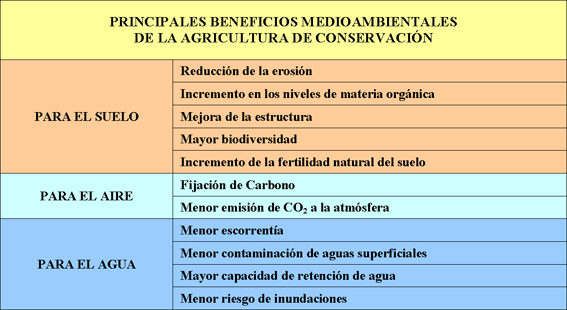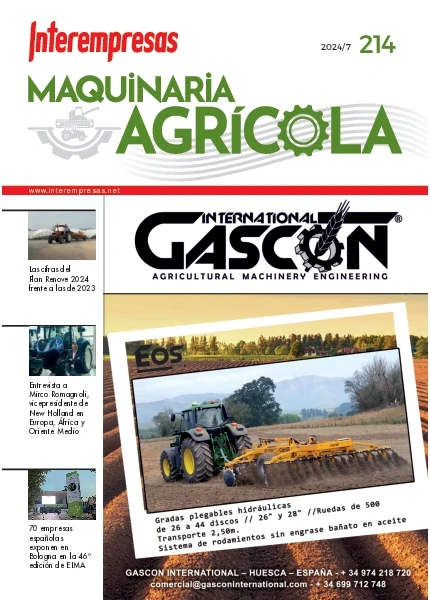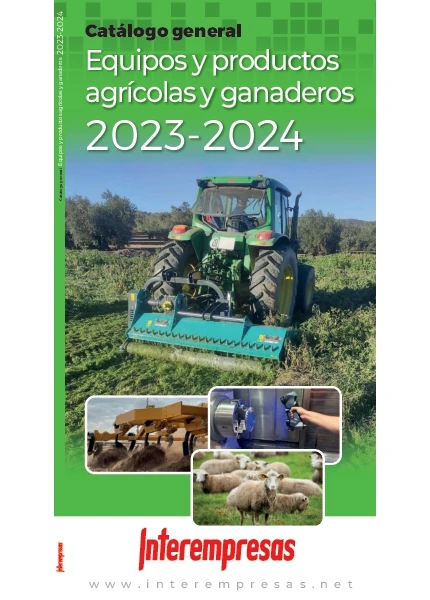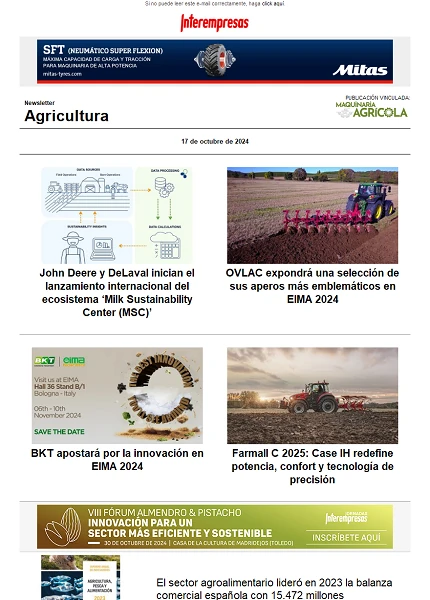Conservation agriculture: a new concept for an environmentally sustainable society
Responsible for technical project and Emilio Jesús González Sánchez, Executive Director Spanish Association conservation agriculture / soils alive03/07/2008
July 3, 2008
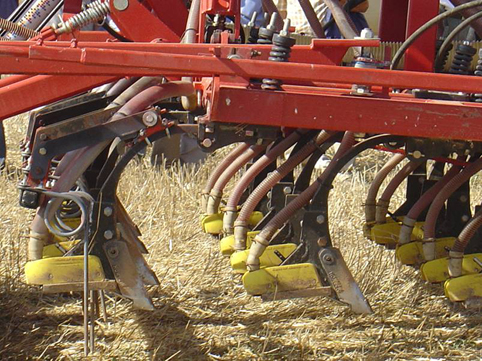
Agronomic practices included in conservation agriculture systems are based on the principles of minimum disturbance of the soil, permanent coverage of the field, either with a covered living or inert cover, and realization of rotations of species on farms of annual cropsIt is advisable in most cases.
The most representative of conservation agriculture agronomic practices are minimum tillage in field crops, direct seeding and the plant covers in woody crops or among annual crops.
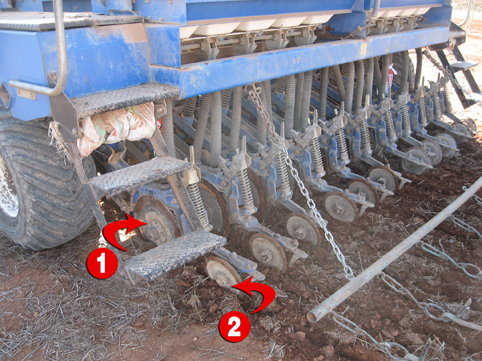
Minimum tillage
The minimum tillage is to perform one or two at the end of the summer, depending on the crop to implement. Always in a brief manner and without investing the soil profile, usually using chísel and vibrocultivators, after the surface work leave sufficient vegetation cover to protect the soil from erosion. If you appear herbs before sowing will draw to a herbicide treatment to eradicate the species of our plot.
Direct seeding
Direct seeding is the epitome of CA in field crops. It is sown on the stubble of previous cultivation, without altering the ground through work. This operation is achieved due to special seeders, which may be of two types: Gates (appropriate for areas with stones and without much clay), or disk (are more expensive, but more versatile). The first are very similar to conventional, unless they have some arms more robust, and arranged in more lines from sowing to facilitate the transit of the plant remains (Figure 1). The discs are more complex and have basically two elements, opening of the Groove disc and disc of closure (see Figure 2). Although they may also possess a drive to cut the plant remains (see Figure 3), which may be smooth or fluted and is used in those places with abundance of stubble, where the ground is not very clay, where its use is discouraged
So seeding is correct we must combine to make a correct chopped and distribution of the plant remains. Follow two basic rules, if our seeder is grating, chop the remains as much as possible, if disk is more convenient to leave less chopped straw into longer pieces, since it facilitates the cutting of the plant remains on the disk of the seeder. It is also of interest that combine has esparcidora of chaff, as if it is in a central cord negatively affect the seeding operation.
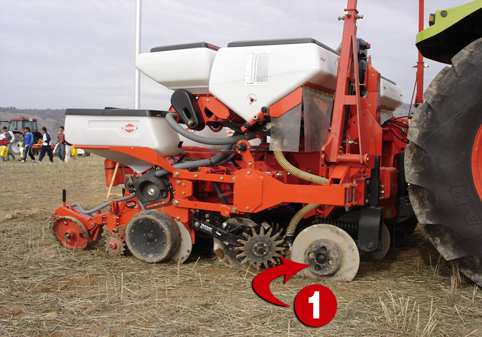
The plant covers
The plant covers is an applicable to woody crops technique, which was to keep the soil of our plantation covered with living grass during the autumn and winter. The arrival of the spring harvest them, in order to avoid competition for water and nutrients between the tree and the herbs, remaining the vegetal rest mower on the surface of the ground is needed.
Depending on the way to implementation of the herbs, the covers are classified into:
-Spontaneous coverings: formed by herbs from the soil seed bank.
-Indoor spontaneous selected toward grasses: let grow the vegetation and are then selected herbs to grasses (bromus, bromine, ballico, etc.) through the use of plant protection.
-Planted roofs: are planted the grasses, normally, but you can mix with legumes. The objective is that they autosiembren in successive years to leave a band of ensemillado of half a meter in width of living plants in the center of the street without mowing.
According to the distribution of herbs, the covers are:
-To all-terrain, occupying the entire surface of the ground, used when the covers are spontaneous.
-Available in bands, is the most common possibility to occupy the center of the street, preferably willing so perpendicular to the line of maximum gradient. Most often used when the covers are sown or selected to grasses, although also it is widely used in spontaneous coverings.
Keep the soil covered brings various environmental benefits both for soil, water and air, which are summarized in table 1. In addition to the environmental improvements of conservation agriculture, with these techniques are achieved significant reductions in the consumption of diesel oil, to delete the work, at the same time that remain or even improve production, thereby increasing the benefits of our farm, by reducing significantly costs of production and operational time.
